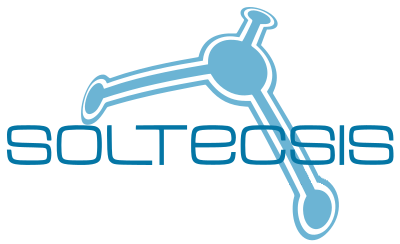DRP (Disaster Recovery Plan)
DRP (Disaster Recovery Plan)
A DRP (Disaster Recovery Plan) is crucial to maintain business operations in the face of disasters, ensuring the continuity and protection of essential data. It is very important to have a good DRP in place to ensure data resilience.
What is a Disaster Recovery Plan?
The "Disaster Recovery Plan" in IT refers to a set of strategies, policies, and procedures that an organization implements to restore its critical systems and data after a catastrophic event or disaster that causes significant disruption to normal operations These events may include:
- Natural disasters: such as earthquakes, floods, fires, storms, etc.
- Man-made disasters: such as cyber-attacks, infrastructure failure, vandalism, etc.
We will now list several options, bearing in mind that our DRP can have some of these or even a combination of all of them, depending on the desired level of data resilience.
Option 1: Distributed Proxmox VE Ceph cluster
Our partner OVHcloud has a service called 3-AZ region thanks to which we can distribute a Proxmox VE Ceph cluster made up of dedicated servers (bare metal) between three different data centres separated by a few tens of kilometres. These data centres that make up the 3-AZ region are interconnected by redundant fibres with negligible latency, allowing us to set up a distributed Proxmox VE Ceph cluster within this region. This gives us great data resilience to localised incidents in one of the data centres as our Virtualization service will not be affected by it.
Option 2: Proxmox Backup Server with frequent replication
Use a Proxmox Backup Server (PBS) or our PBS Online service in a data centre (even in a different country or continent) to have a backup of all virtual machines, keeping a history of several versions over time depending on the space available for the copies. For those virtual machines that are more critical, it is even possible to make frequent copies (e.g. every hour) so that in case of DRP activation, the data loss is as low as possible. This option can be implemented by making use of the PBS online service, OVHcloud's IaaS service to rent a dedicated server on which to install the PBS or any other cloud service in your own facilities on which to place the PBS.
Option 3: Ceph replication
Create a Proxmox VE Ceph cluster identical to the production cluster in a data centre geographically separated from the main cluster and activate Ceph replication between the two clusters. This is the option with the least data loss compared to option 2, but much more expensive as we have to have a cluster equal to the main cluster that will only be activated in case of disaster. This option can be implemented by making use of OVHcloud's IaaS service, given that they have data centres distributed across several countries and continents. Therefore, it would be viable to host the main cluster in one data centre and the replication cluster in another country. It can also be implemented using different cloud providers and also at the customer's premises if he has geographically separated data centres.
Contact
You can get in touch with us by phoning us, sending us an email or by filling in the following form:
Telephone number
Commercial Department: comercial@soltecsis.com Technical Department: soporte@soltecsis.com
Address
SOLTECSIS SOLUCIONES TECNOLÓGICAS, S.L. B54368451 C/Carrasca, 7 local 3 03590 Altea (Alicante) - España (+34) 966 446 046 / 966 919 929 info@soltecsis.com
"*" indicates required fields
